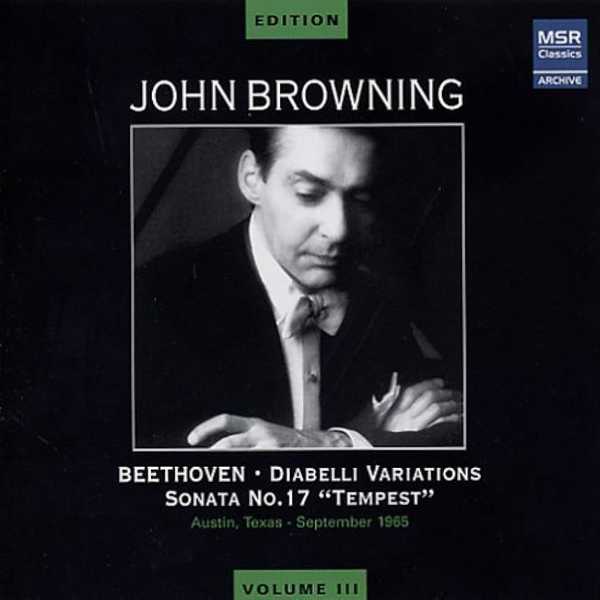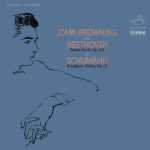
Performer: John Browning
Format: FLAC (tracks)
Label: MSR Classics
Release: 2005
Size: 231 MB
Recovery: +3%
Scan: cover
Beethoven: 33 Variations on a Waltz By Anton Diabelli, Op. 120
01. Theme and Variation 1: Vivace; Alla marcia maestoso
02. Variation 2: Poco allegro
03. Variation 3: L’istesso tempo
04. Variation 4: Un poco più vivace
05. Variation 5: Allegro vivace
06. Variation 6: Allegro ma non troppo e serioso
07. Variation 7: Un poco più allegro
08. Variation 8: Poco vivace
09. Variation 9: Allegro pesante e risoluto
10. Variation 10: Presto
11. Variation 11: Allegretto
12. Variation 12: Un poco più moto
13. Variation 13: VIvace
14. Variation 14: Grave e maestoso
15. Variation 15: Presto scherzando
16. Variation 16: Allegro
17. Variation 17: Allegro
18. Variation 18: Poco moderato
19. Variation 19: Presto
20. Variation 20: Andante
21. Variation 21: Allegro con brio – Meno allegro – Tempo primo
22. Variation 22: Allegro molto, alla “Notte e giorno faticar” di Mozart
23. Variation 23: Allegro assai
24. Variation 24: Fughetta (Andante)
25. Variation 25: Allegro
26. Variation 26: (Piacevole)
27. Variation 27: VIvace
28. Variation 28: Allegro
29. Variation 29: Adagio ma non troppo
30. Variation 30: Andante, sempre cantabile
31. Variation 31: Largo, molto espressivo
32. Variation 32: Fuga: Allegro
33. Variation 33: Tempo di Menuetto moderato
Beethoven: Piano Sonata No. 17 in D Minor, Op. 31 No 2 “Tempest”
34. I. Largo-Allegro
35. II. Adagio
36. III. Allegretto
What makes Beethoven’s 32 Variations on a Waltz by Diabelli so fiendishly difficult interpretively is their wild variety. The power of Beethoven’s late works, from the Symphony No. 9 on through the last five quartets and last four piano sonatas, resides partly in such variety; all of them are built from simple tunes (think of the Ninth Symphony finale) treated in entirely original ways. But these variations take diversity to a new level. They careen from monumentality to rough humor to mystic ecstasy to a naïve, folk-like quality — and the climax of the work, the transition from the large, severe fugue in variation 32 to the limpid final minuet variation, insists on a union of opposites. It is left to the player to put all the work’s various parts together effectively, something that happens relatively rarely. One of the better attempts is this smooth performance, recorded live at the University of Texas in 1965 by pianist John Browning. Browning, often called a pianist’s pianist, shuns high-drama effects; his treatment of the earlier variations is almost circumspect. But he finds little connections between the individual variations, and his performance gradually gains in intensity. By the time Browning reaches the free, ecstatic variations in the later stages of the set, the listener is drawn in. Browning’s recording of the Piano Sonata in D minor, Op. 31/2, “Tempest,” is quite different, curiously enough; he plays this sonata for maximum drama. (The sonata recording did not come from the same concert, and even its date and location are unknown.) The vague 1965 tape-recorded sound of Browning’s recording will keep it from being a standard version of the work, and he never really lets himself get into Beethoven’s rough humor. But, more than most other readings of the Diabelli Variations, Browning’s holds together as a unit.



